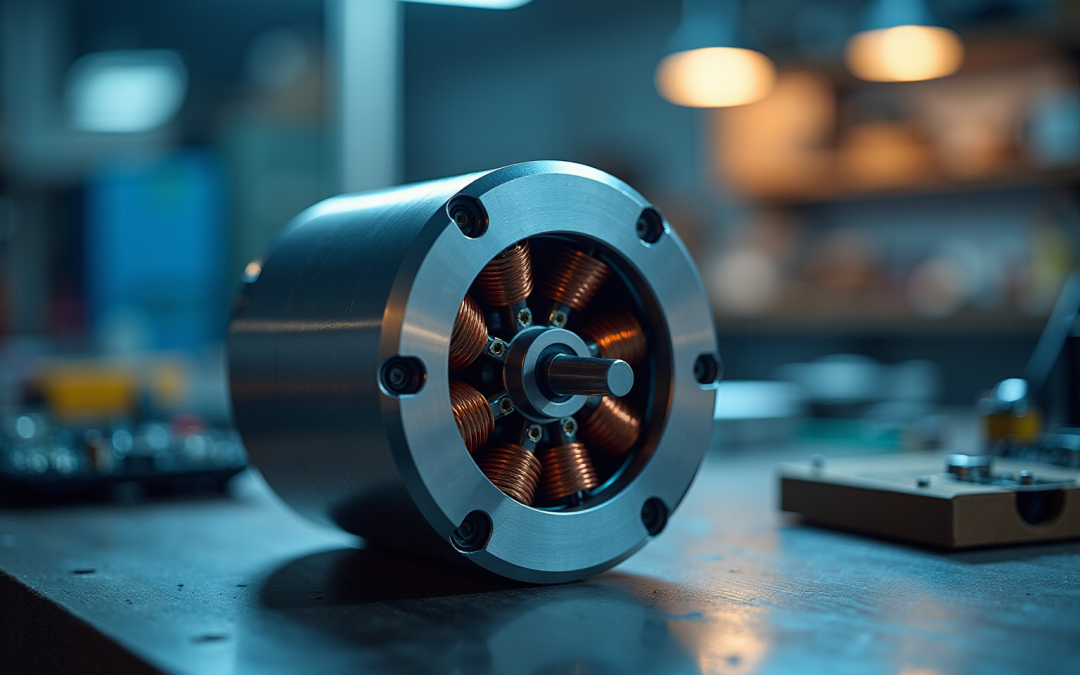Overview
The article delves into the integration of brushless DC (BLDC) motors in fan systems, emphasizing their efficiency, longevity, and advanced control mechanisms as significant advantages. These motors stand out in their ability to reduce energy consumption and noise, while also offering precise speed management—an essential factor for optimizing performance across various applications.
By adopting BLDC motors, industries can not only enhance operational efficiency but also contribute to sustainability efforts. The reduction in energy consumption directly translates to lower operational costs, making these motors an attractive option for businesses aiming to improve their bottom line.
Moreover, the longevity of BLDC motors means less frequent replacements, which further reduces maintenance costs and downtime. Their advanced control mechanisms allow for tailored performance, ensuring that fan systems operate at optimal levels under varying conditions.
In conclusion, the integration of BLDC motors in fan systems is not just a technical upgrade; it represents a strategic move towards greater efficiency and sustainability. Industries should consider this transition to harness the full potential of modern motor technology.
Introduction
Brushless DC motors have transformed the realm of electric machinery, delivering unmatched efficiency and longevity when compared to traditional brushed motors. This tutorial explores the complexities of integrating these advanced motors into fan systems, emphasizing the significant benefits they offer, including:
- Reduced noise
- A compact design
- Improved control
Yet, the path to mastering brushless DC motor fan integration presents its own set of challenges. What technical considerations must engineers address to fully harness the capabilities of these innovative devices?
Explore the Fundamentals of Brushless DC Motors
Brushless DC devices (BLDC) represent a significant advancement in electric machine technology, utilizing electronic commutation in place of mechanical brushes. These devices consist of a rotor and a stator, where the stator, equipped with coils, generates a magnetic field when energized, and the rotor contains permanent magnets. This interaction results in motion, characterized by several key features:
- Efficiency: BLDC motors are celebrated for their remarkable efficiency, often surpassing 90%. This high efficiency is vital in applications where energy conservation is paramount, such as in cooling systems.
- Longevity: The absence of brushes significantly reduces wear and tear, allowing brushless devices to achieve lifespans that can extend to tens of thousands of operating hours, far exceeding the typical 1,000 to 3,000 hours of their brushed counterparts.
- Regulation: These mechanisms offer precise regulation, enabling variable speed and torque adjustments. This capability is especially advantageous in fan applications using a brushless dc motor fan, where airflow must be dynamically adjusted to meet fluctuating demands.
Understanding these fundamentals is essential for effectively integrating brushless DC motor fans into fan systems. This knowledge directs design decisions and application strategies that leverage their efficiency and durability.
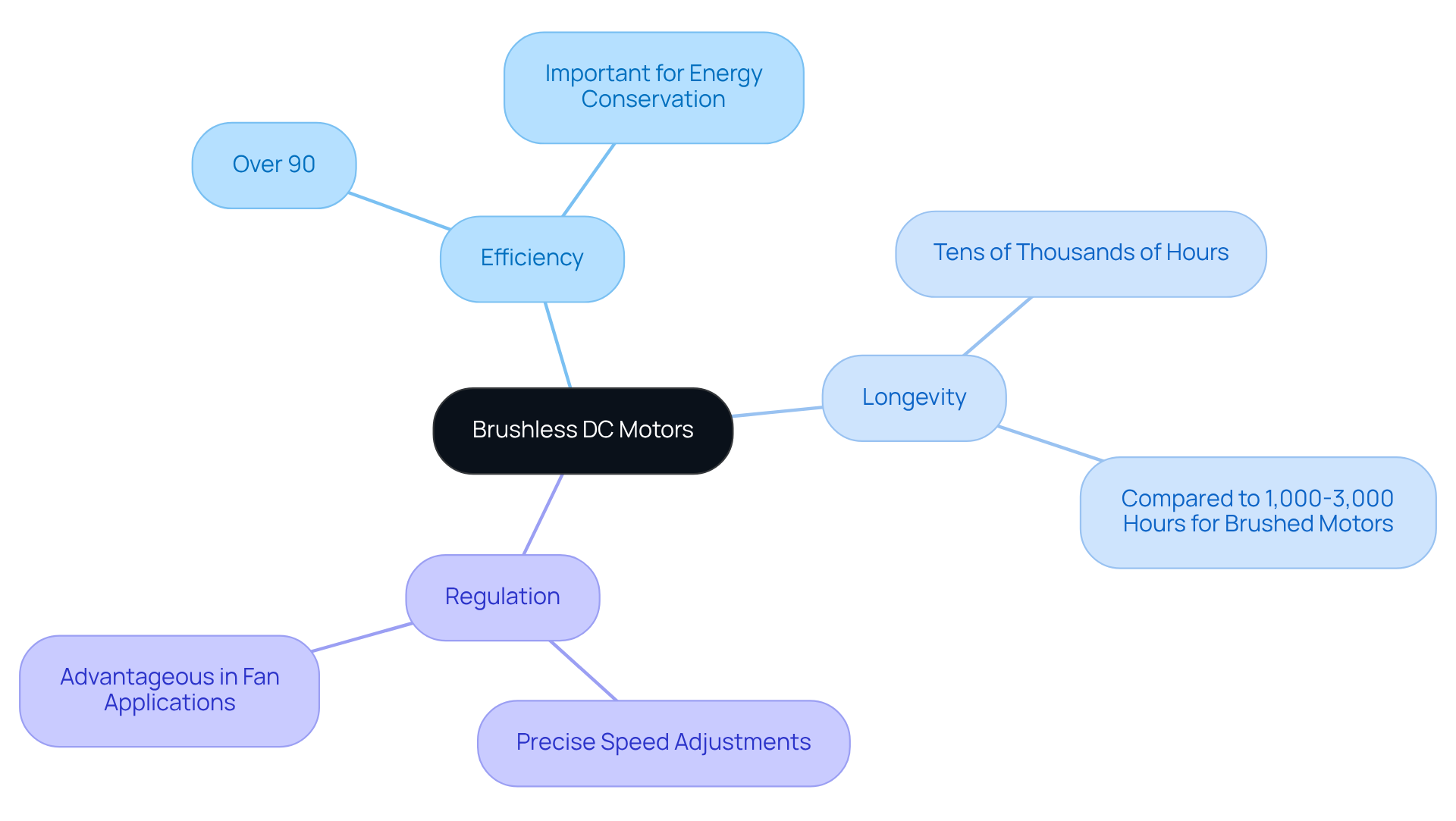
Identify the Advantages of Brushless DC Motors in Fan Applications
Brushless DC motors present a range of advantages in fan applications that are hard to overlook:
- Higher Efficiency: In comparison to traditional AC motors, BLDC motors consume significantly less power. This efficiency is particularly advantageous in energy-sensitive environments, where every watt counts.
- Reduced Noise: The elimination of brushes leads to a notable reduction in mechanical noise. This characteristic makes BLDC motors ideal for applications that demand quiet operation, such as in residential or office settings.
- Compact Design: These motors can be engineered to be smaller and lighter, allowing for more flexible integration into various fan designs. This compactness is crucial for modern aesthetics and functionality.
- Improved Control: Brushless DC motors provide superior speed management and responsiveness. This capability enables fans to adjust airflow according to immediate needs, which is essential for applications like cooling units.
These compelling benefits position brushless DC motors as a preferred choice for contemporary fan designs, enhancing both performance and user experience.
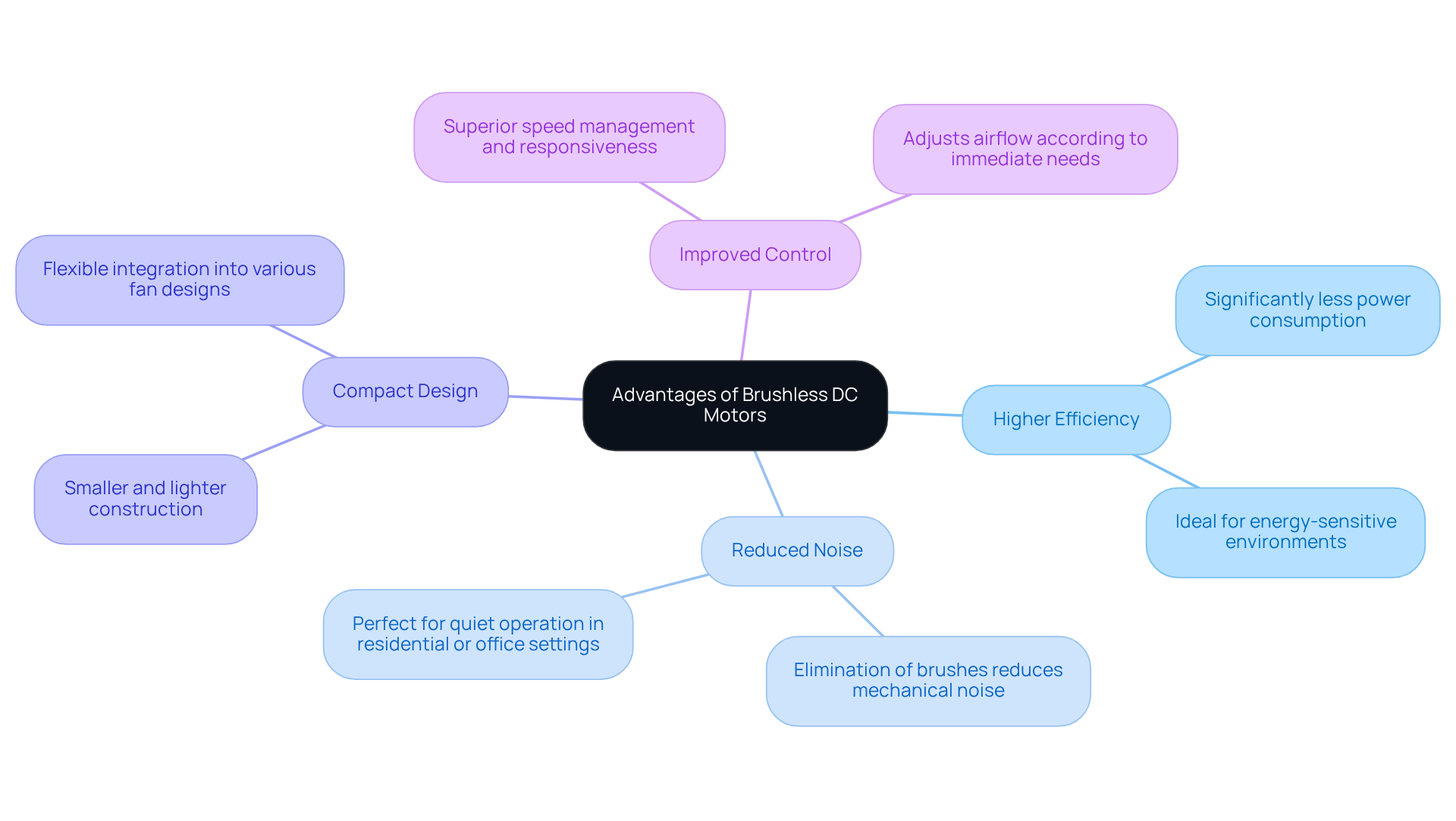
Integrate Brushless DC Motors with Fan Systems: Technical Considerations
Integrating a brushless DC motor fan into systems presents several technical considerations that must be addressed for optimal performance and reliability.
-
Wiring and Connections: Proper wiring is essential to ensure that the motor receives the correct voltage and current. It is crucial to use suitable gauge wires that can effectively manage the power needs of the device.
-
Mounting: Secure attachment of the device is vital to minimize vibrations and noise. Additionally, the alignment of the rotor and stator plays a critical role in achieving optimal performance.
-
Cooling Requirements: Depending on the specific application, it is important to consider the cooling needs of the motor. Ensuring sufficient airflow around the motor can prevent overheating and significantly extend its lifespan.
-
Compatibility with Controllers: It is imperative to verify that the controller is compatible with the specifications of the brushless DC motor. This includes aligning voltage, current ratings, and management protocols to ensure seamless operation.
By addressing these considerations, engineers can effectively integrate brushless DC motor fans into fan systems, thereby optimizing both performance and reliability.
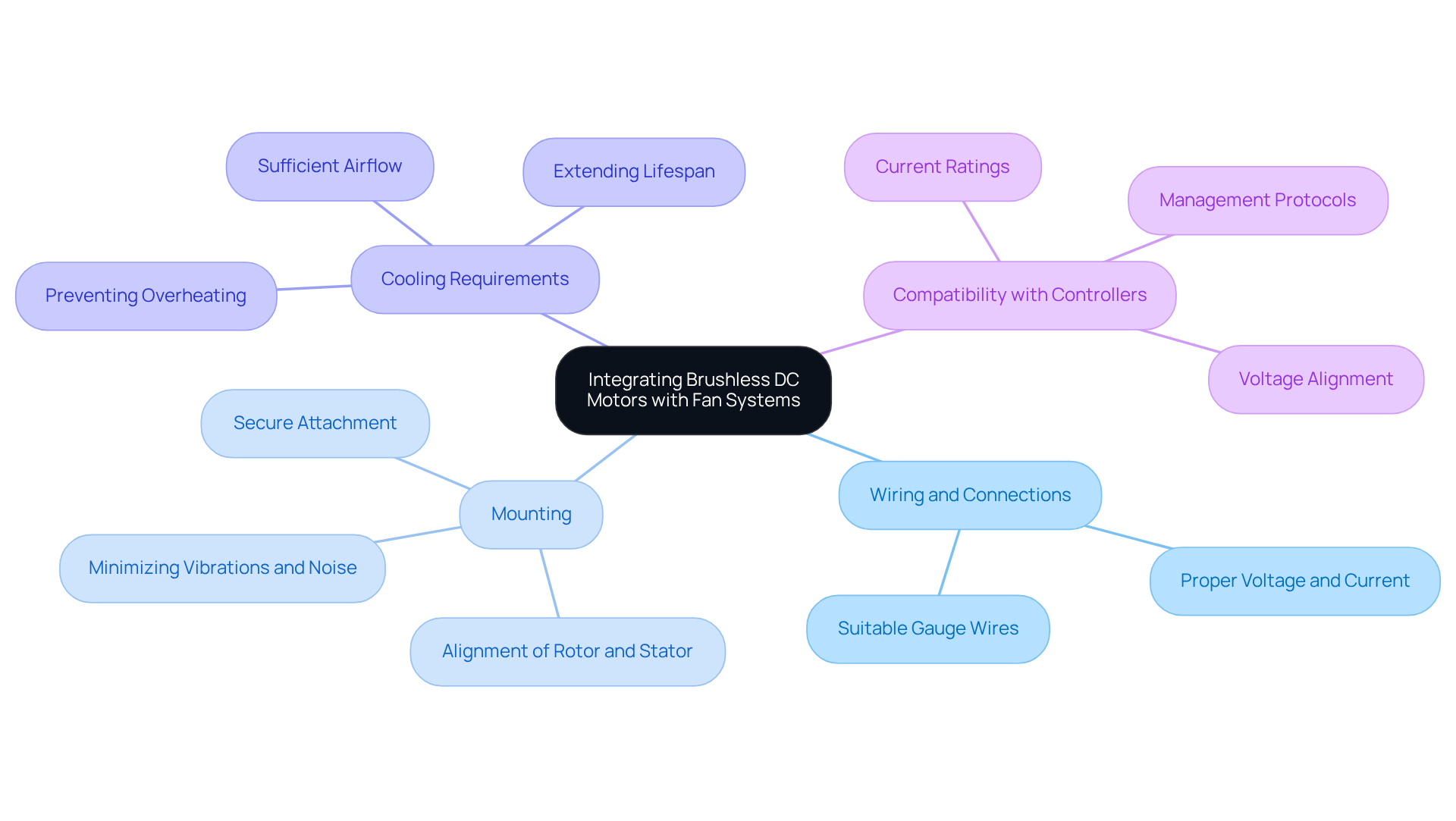
Understand Control Mechanisms for Optimizing Brushless DC Fan Performance
To optimize the performance of brushless DC fans, understanding control mechanisms is crucial:
- Pulse Width Modulation (PWM): This technique adjusts the width of pulses in a signal to control motor speed efficiently. PWM enables precise speed management while minimizing energy waste, making it a preferred method in modern machinery operations. As Utsav Singh notes, “Selecting the appropriate control approach for closed-loop speed regulation in BLDC devices relies on application needs, complexity of the arrangement, and required accuracy.”
- Feedback Systems: Implementing feedback mechanisms, such as tachometers or Hall Effect sensors, facilitates real-time monitoring of engine speed. These systems adjust the input to maintain desired performance levels, ensuring consistent operation under varying load conditions. Singh emphasizes that “the key elements of closed-loop speed regulation consist of BLDC motors, speed sensors, controllers, algorithms, and inverter/driver circuits.”
- Temperature Control: Integrating temperature sensors into the setup allows for dynamic adjustments to fan speed based on thermal conditions. This not only guarantees effective cooling but also prevents overheating, thereby enhancing the longevity of the components.
- Smart Management Systems: Advanced regulation algorithms can predict and adjust fan performance according to environmental factors, optimizing efficiency and improving user comfort. These technologies leverage data to make informed decisions, further enhancing the reliability of brushless DC fan units.
By employing these control mechanisms, engineers can significantly boost the performance and efficiency of brushless DC motor fan systems, leading to improved overall system reliability.
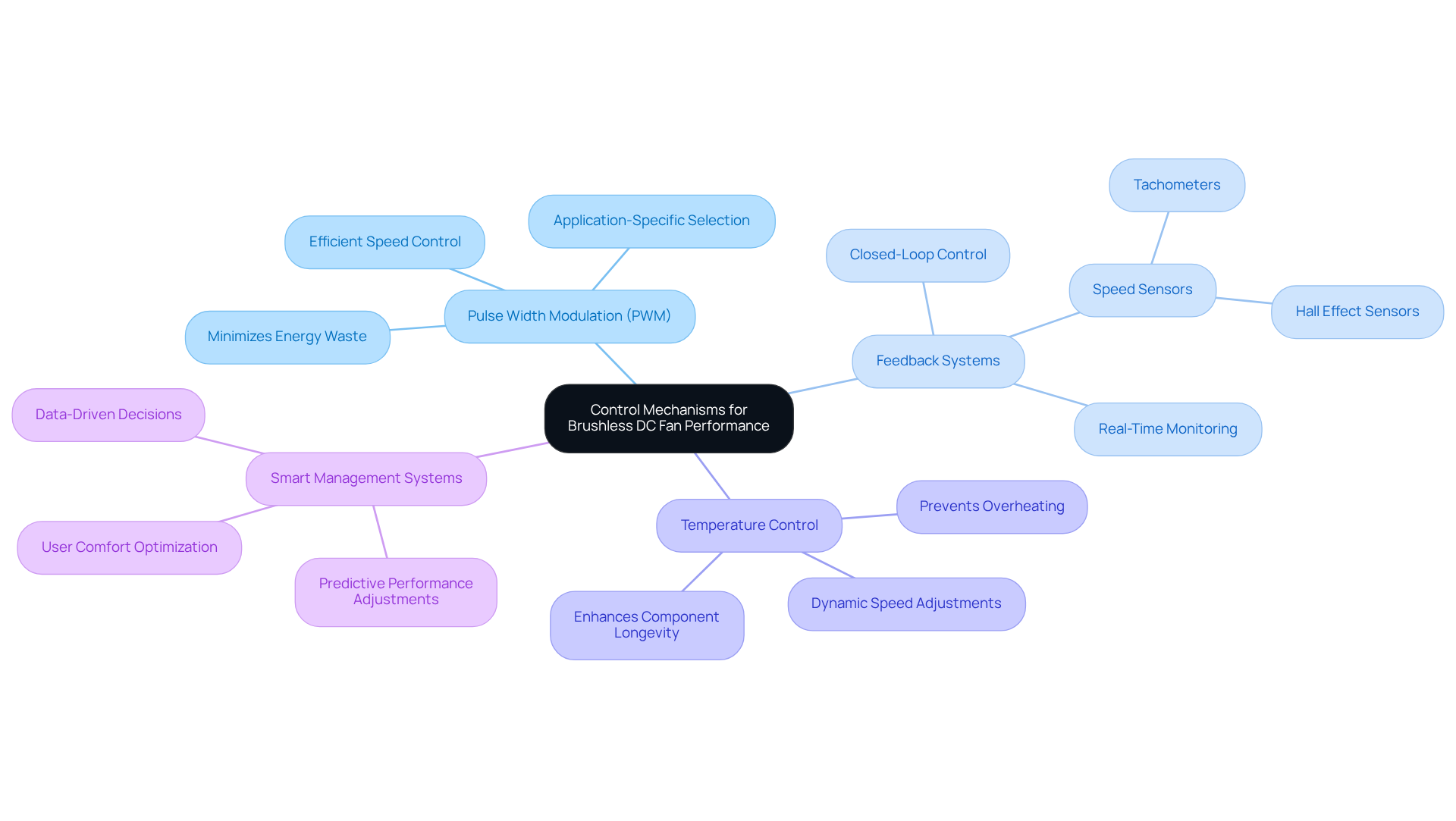
Conclusion
Mastering the integration of brushless DC motors in fan systems represents a pivotal advancement in efficiency, longevity, and precision. This tutorial has explored the fundamental principles of brushless DC motors, underscoring their advantages over traditional brushed models. By grasping these core concepts, you can effectively leverage the benefits of brushless technology to elevate fan applications.
Key insights throughout this guide reveal the exceptional efficiency and durability of brushless DC motors, their reduced noise levels, and the compact designs that facilitate versatile integration. Moreover, critical technical considerations such as proper wiring, mounting, and compatibility with control systems have been emphasized as essential for successful implementation. Control mechanisms like Pulse Width Modulation and feedback systems further enhance fan performance, ensuring adaptability to varying operational demands.
In conclusion, integrating brushless DC motors into fan systems is not just a technical upgrade; it is a strategic decision aimed at advancing energy efficiency and operational effectiveness. As industries increasingly prioritize sustainability and performance, adopting brushless DC motor technology in fan designs will yield immediate benefits and contribute to long-term advancements in cooling applications. Embracing this technology is crucial for engineers and designers who aspire to remain at the forefront of innovation in the field.
Frequently Asked Questions
What are brushless DC motors (BLDC)?
Brushless DC motors (BLDC) are electric machines that utilize electronic commutation instead of mechanical brushes. They consist of a rotor and a stator, where the stator generates a magnetic field when energized, and the rotor contains permanent magnets, resulting in motion.
What are the key features of brushless DC motors?
The key features of brushless DC motors include high efficiency (often surpassing 90%), longevity due to the absence of brushes, and precise regulation for variable speed and torque adjustments.
Why is the efficiency of BLDC motors important?
The efficiency of BLDC motors is important because it allows for significant energy conservation, making them ideal for applications like cooling systems where energy use is critical.
How does the lifespan of brushless DC motors compare to brushed motors?
Brushless DC motors have a much longer lifespan, often extending to tens of thousands of operating hours, compared to the typical lifespan of 1,000 to 3,000 hours for brushed motors.
In what applications are the precise regulation capabilities of BLDC motors particularly beneficial?
The precise regulation capabilities of BLDC motors are particularly beneficial in fan applications, where they allow for dynamic adjustments of airflow to meet varying demands.
Why is understanding the fundamentals of BLDC motors important?
Understanding the fundamentals of BLDC motors is essential for effectively integrating them into fan systems, guiding design decisions and application strategies that take advantage of their efficiency and durability.

